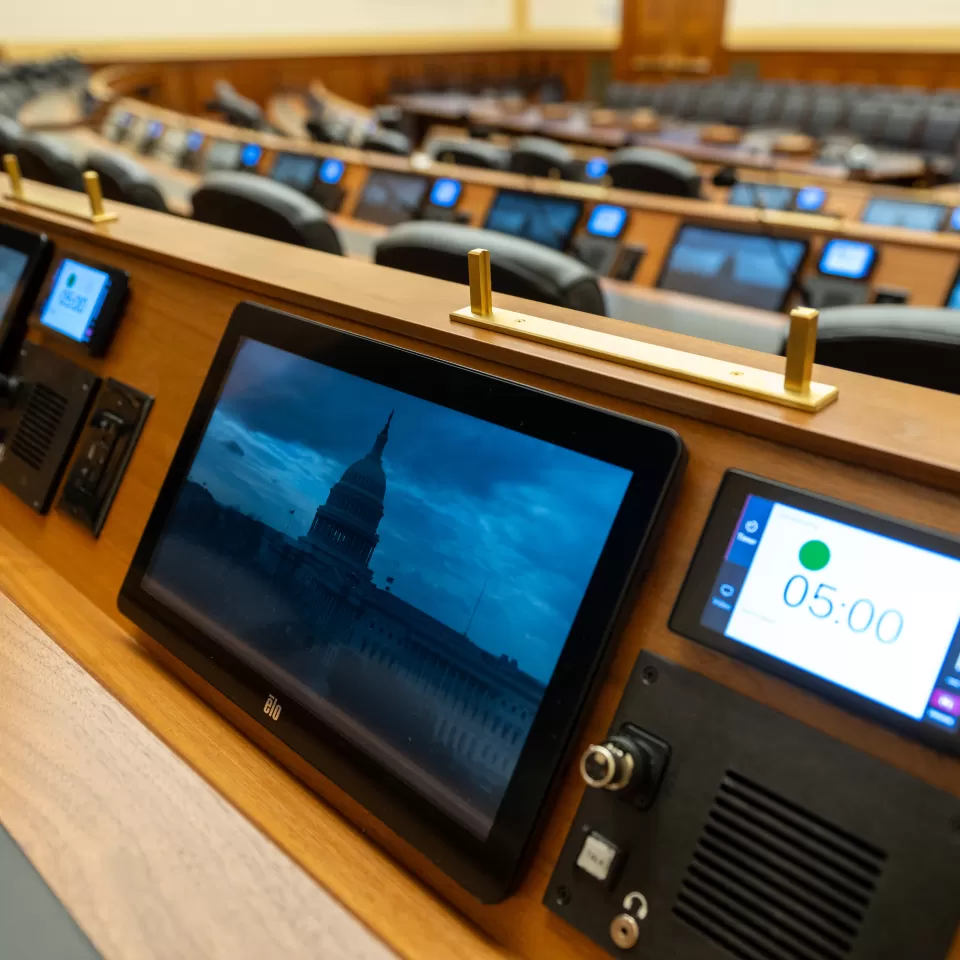Our Stories
Recent Articles
Projects
House Hearing Room Renovation
Rayburn Room 2172 recently underwent renovations that include a refurbished wall-to-wall audiovisual (AV) system, a custom dais and several improved accessibility features.
Projects
A House for All Seasons
More than 140 years later, the Architect of the Capitol's Summerhouse still offers visitors respite. Recent maintenance efforts will help keep the site around for repeat visitors and first timers alike.
Projects
The AOC Never Paints Itself Into a Corner
An in-depth look at the most recent phase of the Capitol Building Paint Analysis and Plaster Repairs project.
Projects
Group Project: The Russell Building Courtyard
The Russell Senate Office Building courtyard was recently restored as a supplement to the Russell Exterior Envelope Project.









Comments
Very cool to see! Thank you for sharing! :)
Wondered why all the ironworks we being erected on the Capital Building. Fascinated ! Hope more photos are coming.
Extremely interesting process. As a 40 year experienced Jeweler and Goldsmith it is amazing that this is the same proceedure I use to duplicate and restore fine heirloom jewelry pieces,only on a much smaller scale.
So glad to find out why all of the metal was covering the Capitol. I had the pleasure of vacationing in D.C in 1996. Love it dearly Great job everyone working so hard to restore the dome.
Good treasures last forever and its worth keeping for years to come.
it would be wonderful if an update, status of the progress would be put on the big news shows.
Hey Joe-Your Dad would have been so proud!Great Job!I'm following all the progress now that UB gave me a computer!"Mo"
I'm very much impressed and appreciate keeping the dome intact.
Very interesting.
Let's see it ! Hope PBS is documenting this project! Beats political new!!_x000D_ _x000D_ _x000D_
Was wondering what was going on with all the scaffolding on the dome. Now I know...thanks for the info! Hope the workers keep safe and the project is completed successfully and on time.
That is so interesting that they are able to make molds for the metal and so they can come out with these beautiful designs in metal. I know they could do this, but the molds they show here seem really small and I would think that the wood would cause problems and end up burning which would in turn ruin the mold. We have come a long way from just being able to make metal to having artistic carvings molded onto them.
I have wondered for months what in the world was going on seeing it in the background of FOX's news shows. Kept forgetting to inquire, and now, I finally know!! Thanks for enlightening us.
I follow a page on Instagram where they talk about metal working. It's amazing to see what they make and how they make it. I can't wait to learn more about this and how to do it.
Nobody has yet to mention in 1850 - 1860 these were all done by hand. Etched poured and made to put on Capitol building now machines can mimic that craftmanship think of the people who did the original. One at a time. These is not an attempt to diminish the work of the craftman of today, But merely a praise for original craftmans._x000D_
I love the craftsmanship of you iron work! It is amazing what an art it is to shape iron into arrangements. I had no idea wood toolings are created by the usage of 3D scanners. Thank you for sharing!
Add new comment